Welcome to this detailed exploration on the work glove market. This is a realm that is often overlooked, yet incredibly important for countless industries, businesses, and individual workers. From construction to healthcare, food service, and more, work gloves bring safety to the fore, shielding our hands from potential hazards and ensuring tasks can be done effectively and safely.
Whether it's a heavy-duty leather pair for hardware jobs, chemically resistant gloves for lab work, or disposable gloves for hygiene purposes, the market for work gloves is exceptionally diverse. In this article, we will navigate through the complexities of this market. We aim to provide you with an understanding of market trends, types of gloves, and the factors to consider when choosing the right glove for a specific task.
Unfurl the nuances of this key safety component with us as we delve into the global work glove market, the growth patterns and existing trends, identifying the role of various types of gloves and their respective markets, such as disposable versus reusable gloves, as well as looking at material considerations, the importance of fit and size, and the market perspectives for specific gloves. Get ready to grasp the intricacies of the work glove industry!
Overview of Global Work Glove Market
The world is increasingly acknowledging the importance of workplace safety. From manufacturing plants and construction sites to homely gardens, the need for protective work gear, specifically work gloves, is skyrocketing. Now more than ever, the spotlight is on the work glove market, a sector positioned for robust growth as workplace safety measures continue to evolve and get prioritized. The global work gloves market, having held a value of approximately USD 12.3 billion in 2023, has been forecasted to soar to a whopping USD 19.1 billion by 2032.
But what's driving this impressive surge? A bevy of factors plays into this growth story. Let's take a closer look at each one:
- Rising Safety Standards and Regulations: Most countries have reinforced their safety norms in the workplace in recent years. Governments are mandating employers to provide adequate protective gear, translating into increased demand for work gloves.
- Market Diversification: The work glove market is no longer limited to industrial use. The uptake in various sectors, including healthcare, gardening, and sports, has widened the potential for more substantial growth.
- Technological Innovations: The pursuit of better, safer, and more comfortable work gloves is pushing manufacturers to innovate continuously. This has led to advancements like cut-resistant gloves, heat-resistant gloves, and even smart gloves equipped with advanced tracking features.
- Economic Growth and Industrialization: Particularly in developing countries, progress in economic conditions and rapid industrialization are contributing significantly to the work gloves market's expansion.
While this projection of buoyant growth is promising, the key to leveraging this market's potential lies in understanding and adapting to its needs. Therefore, businesses must be attuned to market trends while constantly developing their products to replace obsolete designs and cater to evolving customer needs. These efforts will certainly be worthwhile in capitalizing on the lucrative opportunities provided by the burgeoning global work glove market.
Growth and Trends in the Industrial Gloves Market
In recent years, the industrial gloves market has experienced significant growth and shown promising future trends. By the year 2023, the market had already expanded to a stunning 16.06 billion dollars, reflecting a Compound Annual Growth Rate (CAGR) of 11.2%. This dynamic surge has marked the importance of industrial gloves across multiple sectors.
Key factors contributing to this impressive growth include:
- Increase in workplace safety regulations: As more countries enforce stringent workplace safety rules, companies have had to correspondingly increase their investment in safety equipment, including industrial gloves. This trend has driven market growth and is anticipated to continue doing so in the future.
- Growing awareness about worker's health: Companies are progressively more attentive to ensuring their employees' well-being, leading to an increased demand for protective equipment such as gloves.
- Technological advancements: Technological breakthroughs in glove manufacturing have led to products that offer higher levels of protection, comfort, and durability, stimulating higher demand.
- The COVID-19 effect: The current global health crisis has further increased the demand, as gloves have become crucial to protect frontline workers from infection.
If we continue to see the same growth rate, the market could reach an estimated worth of around 20.45 billion dollars by 2033, becoming an increasingly essential player in the global industry.
In essence, this data signifies the growing emphasis placed on safety, health, and innovation in industry sectors worldwide. The industrial gloves market is not just a standalone entity, but a mirror reflecting the significant shifts in our work culture and ethics. The proportional rise in the industrial gloves market is a testament to the ascending importance of workplace safety and health on the global stage. Its anticipated future growth holds promise for an even safer and health-conscious industrial environment in the years to come.
Understanding the Protective Gloves Market
The protective gloves market is a fascinating landscape that is constantly evolving, dictated by continual shifts in industrial standards and public safety laws. This market is of vital importance yet often underestimated in its scale and influence. After all, protective gloves are used in a myriad array of sectors, from health facilities to factories, construction sites, and emergency services. In this world, your safety is literally in your own hands!
The global protective gloves industry is projected to experience a momentous expansion in the next decade. Imagine an industry that's worth USD 19.7 billion in 2023, predicted to grow to a staggering USD 33.1 billion by 2032. To truly comprehend this exceptional growth, we have to dive deeper into the factors shaping this market.
Changing Workplace Ethics
Workplace safety stands as a paramount concern for any organization, regardless of its size or sector. An increasing trend towards strictly abiding by safety regulations has driven demand for protective gloves. These hand protectors shield workers from a range of potential hazards, including harmful chemicals, sharp objects, and electrical currents.
Healthcare Boost
The healthcare sector contributes significantly to this market's growth, with gloves serving as an essential piece of Personal Protective Equipment (PPE). They prevent contamination, shield caregivers and patients from potential pathogens and infections, and halt the spread of diseases. The relentless fight against global pandemics has made the use of protective gloves more vital than ever.
Technological Innovations
The emergence of new technologies has led to the creation of gloves that are not just protective but also convenient and comfortable. Extensive research efforts are underway to craft gloves that offer superior durability, flexibility, and tactile sensitivity without compromising safety.
Moving forward, the protective gloves market will continue to evolve, paced by advancements in technology, stricter safety regulations, and the increasing importance of personal safety in workplaces worldwide. The globe's industries and workers are depending on it, and at a growth rate like this, it's a market that will command attention. Let's keep our eye on this industry while it unfolds in front of us, one glove-clad hand at a time.
Importance of Fit and Size in Work Gloves
Safe hands are the guarantee of efficient work, especially when it comes to labor-intensive jobs. Selecting the right pair of work gloves is not only about the materials, durability, or the level of protection they offer but also about the fit and size that significantly impact user comfort and safety. Contrarily, an otherwise perfect pair of work gloves will not provide the required protection if they are too tight or too loose.
Imagine a sculpture artist at work, curating magic with their hands. The degree of precision involved with each stroke of their chisel is almost impossible to attain with unsuitably tight gloves restricting their hand movements. Similarly, a mechanic, unbeknownst to the impending danger, continues to work with excessively loose gloves that may unexpectedly catch in the machinery, leading to severe accidents.
Consequences of Ill-fitted Work Gloves
Problems that may arise due to poorly fitting work gloves primarily include:
- Limited Mobility: Overly tight work gloves can restrict hand and finger movement, making it difficult to grasp tools or perform delicate tasks effectively. Impaired flexibility and finger dexterity may impede productivity.
- Risk of Accidents: Too loose gloves can be dangerous as they are susceptible to getting caught in machinery or slipping off, leading to possible accidents.
- Discomfort and Fatigue: Incorrect glove size can cause discomfort, leading to frequent adjustments and fatigue. Constantly having to adjust your gloves does not only distract from the task at hand but also leads to quicker exhaustion.
- Poor Protection: Regardless of their strong material or high quality, ill-fitted gloves can fail to provide effective protection against workplace hazards. Secure fit is paramount for ensuring maximum protection.
"Dress for the job you want, not the job you have" is a common saying, aiming at the impact of appropriate clothing on professional success. Maybe it's time we extended this age-old advice to protective equipment as well, stressing the importance of well-fitted safety gear, including work gloves. Assurance of hand safety in workplaces starts by giving due significance to the fit and size of work gloves! The right blend of comfort and safety can virtuously contribute to accident-free workplaces and enhanced productivity.
Material Considerations for Work Gloves
Choosing the right material for work gloves is crucial, as it directly influences the safety, comfort, and performance of an employee at any job site. Whether you are a construction worker on a skyscraper or a mechanic in a garage, your gloves serve as the first line of defence. Understanding the materials, their capabilities, and their limitations can help you make an informed and beneficial decision that keeps your hands safe and your work efficient.
Cowhide is a popular choice in heavy-duty work gloves due to its striking balance among durability, dexterity, and comfort. A favourite among professionals across various industries, cowhide gloves offer excellent abrasion resistance and have a reputation for longevity. As they conform to the shape of the wearer's hands over time, they provide a second-skin feel, offering precision without compromising on protection.
Here are some key reasons why cowhide makes for a great material choice for work gloves:
- Durability: Cowhide is a tough material that can withstand heavy use without wearing down. These gloves can endure tough worksites where rough and sharp objects are common.
- Abrasion Resistance: In industries where hands come in contact with abrasive surfaces frequently, cowhide gloves offer essential protection. They can resist tears and cuts, providing a barrier between the skin and potential hazards.
- Comfort: Cowhide gloves are not just about practicality; they offer a comfortable fit as well. They mould to the hands over time, giving a custom-fit feeling, which adds to their user-friendly allure.
- Dexterity: Though tough and durable, cowhide is a flexible material that allows for high levels of manual dexterity.
Selecting the right gloving material such as cowhide is about understanding the unique demands of your work and the protection you need. While one material may excel in a particular area, it might fall short in another. Ultimately, it's about finding balance and making informed decisions based on your individual needs.
In essence, by considering the durability, abrasion resistance, comfort, and dexterity offered by materials like cowhide, you can identify a work glove that not only ensures safety but also enhances productivity.
The Role of Disposable and Reusable Gloves
Every day, in a multitude of sectors and industries, people rely on an essential yet often overlooked tool: gloves. Notably a requirement in medical, food manufacturing, and automotive industries, gloves serve as a protective barrier for the wearer against potential threats, like harmful chemicals, hazardous materials, or infections. Despite their diverse applications, there are primarily two types of gloves: disposable and reusable.
Understanding the applications, advantages, and expected market trends for both types of gloves can be immensely beneficial for businesses and individuals alike. So, let's delve into some insights about both the disposable and reusable gloves market.
Global Disposable Gloves Market
Over the past few years, the disposable gloves market has surged, reflecting the growing awareness about hygiene practices, especially with the recent COVID-19 pandemic heightening global consciousness. Disposable gloves, favored for their convenient and cost-effective nature, have found a significant place across industries. Remarkably, the disposables gloves market is expected to grow at a compelling compound annual growth rate (CAGR) of 8.4%.
Let's cover some key points about disposable gloves:
- Their primary use is to provide a single use, protective layer for sensitive tasks like surgical procedures and food handling.
- These gloves are often made from latex, vinyl, or nitrile rubber.
- Industries known to extensively use disposable gloves include healthcare, food service, cleaning, and pharmaceuticals, among others.
Global Reusable Gloves Market
On the other hand, the reusable gloves market also presents a strong case. Characterized by durability and longevity, reusable gloves are frequently chosen for industrial applications, where strong resistance to wear and tear is critical. The reusable gloves market in the Americas alone is estimated at a generous USD 4.70 billion in 2023.
Here are some fascinating details about reusable gloves:
- As their name suggests, these gloves are intended for multiple uses, which makes them an excellent choice for environmentally-conscious consumers.
- Common materials for reusable gloves include leather, canvas, or metal mesh.
- The sectors that frequently use reusable gloves are automotive, steel manufacturing, construction, and other heavy-duty applications.
Whether you're a sector professional or a private individual, recognizing the shifting dynamics of global glove markets is essential. As the use of both disposable and reusable gloves continues to grow, so does their impact on various sectors, economies, and environmental factors. The choice between disposable and reusable fundamentally depends on the user's needs, but with these insights, one can certainly make an informed decision. It's a fascinating world lived mostly in our hands!
Perspective on Specific Gloves Markets
Nitrile Gloves Market
When it comes to the nitrile gloves market, all forecasts seem to agree on an exponentially positive growth. It implies that we're about to witness substantial transformations in that field as the sector is estimated to reach an impressive USD 20.45 billion by 2030. Even more interesting is the projected Compounded Annual Growth Rate (CAGR). Believe it or not, this market may expand at a roaring 11.01% over the next decade.
Several factors are helping nitrile gloves make a mark in the glove industry:
- Superior Resistance: They offer excellent resistance against punctures and tears, making them a preferred choice in critical environments.
- Latex-Free: Nitrile gloves are a boon for people with latex allergies as they are 100% synthetic.
- Versatile Usage: From healthcare to food services, these gloves cater to an extensive range of industries.
Chemical Protective Gloves Market
On the other hand, we have the chemical protective gloves market, another potential game-changer in the protective gear industry. Predictions show a solid slow and steady rise for this market. Expected to grow at a CAGR of 7.0% from 2024 to 2034, there's no denying that the future holds a lot of promise for this sector.
Let's examine why chemical protective gloves are also in the spotlight:
- Enhanced Safety Measures: These gloves are specifically designed to resist harsh chemicals and hazardous substances, ensuring utmost safety in industries like chemical processing, laboratories, and healthcare.
- Compliance with Standards: Many countries enforce strict regulations about safety gear, making chemical resistant gloves a mandatory requisite in certain sectors.
- Innovation and Technological Advancements: With continual innovation in material and design, these gloves are becoming more comfortable and efficient at providing protection.
In both the nitrile gloves and chemical protective gloves markets, we see impressive trends that suggest considerable growth and potential. The focus on safety, hygiene, and improved productivity in various sectors fuels this growth. As someone interested in the protective gear industry, these are certainly markets to keep an eye on!
Conclusion
Navigating the work glove market can certainly be a complex endeavor, reflecting the wide range of options available. Each type of glove serves a unique function and understanding these can help in making an informed decision. With a focus on appropriate fit, understanding of materials, and distinguishing between reusable and disposable gloves, consumers can make sure they’re choosing the right glove for the right job, every time.
In the same vein, workers in particularly dangerous industries such as logging must also prioritize the protection of other vulnerable body parts, like the lower body. Rain Gear Pro tweaks the game by offering chainsaw safety pants that deliver both comfort and security. Crafted for longevity, these saw pants are a reliable companion for any logger or arborist. While each type of work gear has its specifics, they all aim for the same goal: ensuring safety while providing ease of movement and comfort.
Choosing the right work gear is step one to adhering to safety standards and effectively executing tasks, so when it comes to work gear, always go for professional-grade options that have your best interest at heart. For more information, visit Rain Gear Pro, where your safety is our priority.
Frequently Asked Questions
-
What are the different types of work gloves available in the market?
The different types of work gloves available in the market include leather gloves, latex gloves, nitrile gloves, cut-resistant gloves, heat-resistant gloves, and chemical-resistant gloves.
-
What factors should I consider when choosing work gloves?
When choosing work gloves, consider factors such as the type of work you will be performing, the level of protection required, durability, comfort, dexterity, and glove size.
-
How do I determine the right size of work gloves for me?
To determine the right size of work gloves, measure the circumference of your hand at the widest part, excluding the thumb. Compare your measurement to the sizing chart provided by the glove manufacturer.
-
Can I use the same gloves for different types of work?
It is not recommended to use the same gloves for different types of work, especially if they require different levels of protection or involve exposure to different hazards. Use gloves specifically designed for each task to ensure optimal safety.
-
How do I maintain and clean my work gloves?
The maintenance and cleaning requirements may vary depending on the material of the work gloves. Follow the manufacturer's instructions for cleaning and storing your work gloves to prolong their lifespan and maintain their effectiveness.



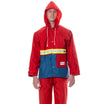
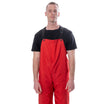
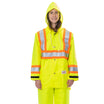
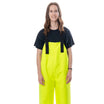
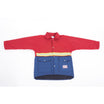
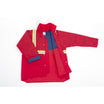

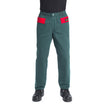
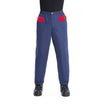
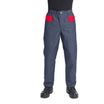
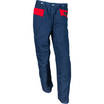
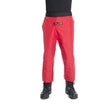
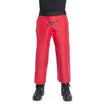
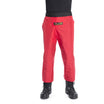
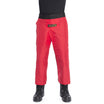


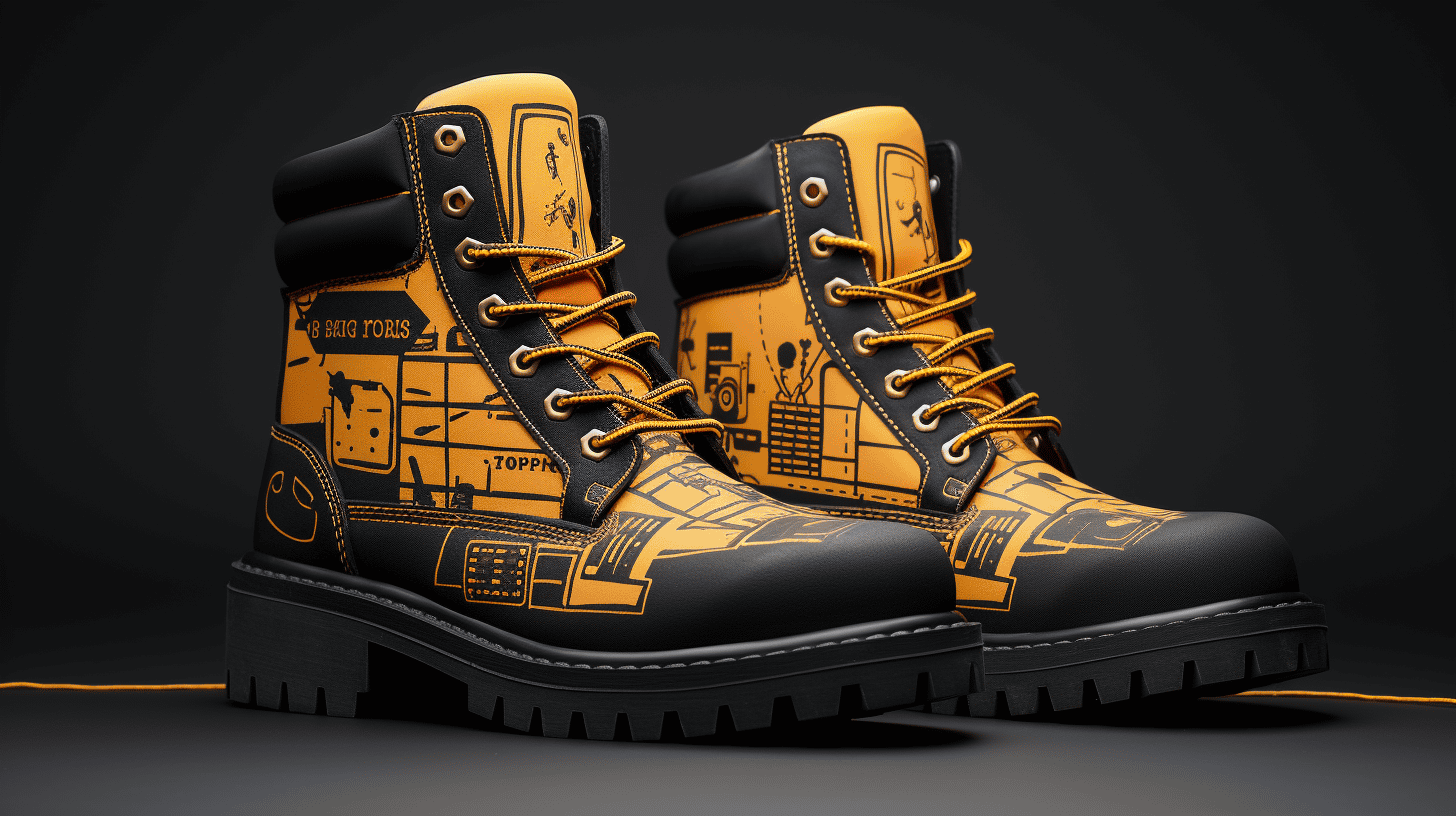
Leave a comment
This site is protected by hCaptcha and the hCaptcha Privacy Policy and Terms of Service apply.